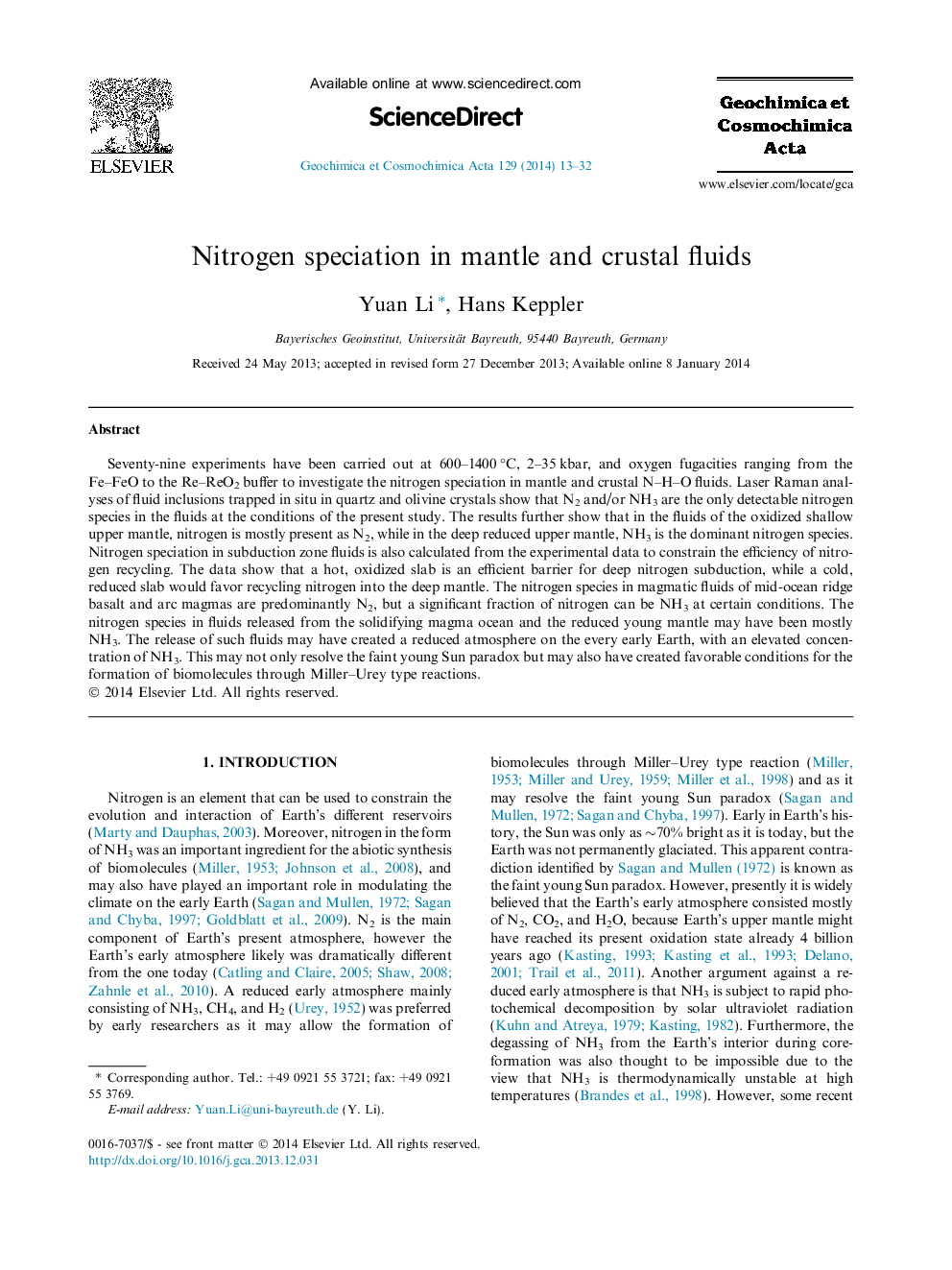| Article ID | Journal | Published Year | Pages | File Type |
|---|---|---|---|---|
| 4702119 | Geochimica et Cosmochimica Acta | 2014 | 20 Pages |
Seventy-nine experiments have been carried out at 600–1400 °C, 2–35 kbar, and oxygen fugacities ranging from the Fe–FeO to the Re–ReO2 buffer to investigate the nitrogen speciation in mantle and crustal N–H–O fluids. Laser Raman analyses of fluid inclusions trapped in situ in quartz and olivine crystals show that N2 and/or NH3 are the only detectable nitrogen species in the fluids at the conditions of the present study. The results further show that in the fluids of the oxidized shallow upper mantle, nitrogen is mostly present as N2, while in the deep reduced upper mantle, NH3 is the dominant nitrogen species. Nitrogen speciation in subduction zone fluids is also calculated from the experimental data to constrain the efficiency of nitrogen recycling. The data show that a hot, oxidized slab is an efficient barrier for deep nitrogen subduction, while a cold, reduced slab would favor recycling nitrogen into the deep mantle. The nitrogen species in magmatic fluids of mid-ocean ridge basalt and arc magmas are predominantly N2, but a significant fraction of nitrogen can be NH3 at certain conditions. The nitrogen species in fluids released from the solidifying magma ocean and the reduced young mantle may have been mostly NH3. The release of such fluids may have created a reduced atmosphere on the every early Earth, with an elevated concentration of NH3. This may not only resolve the faint young Sun paradox but may also have created favorable conditions for the formation of biomolecules through Miller–Urey type reactions.
